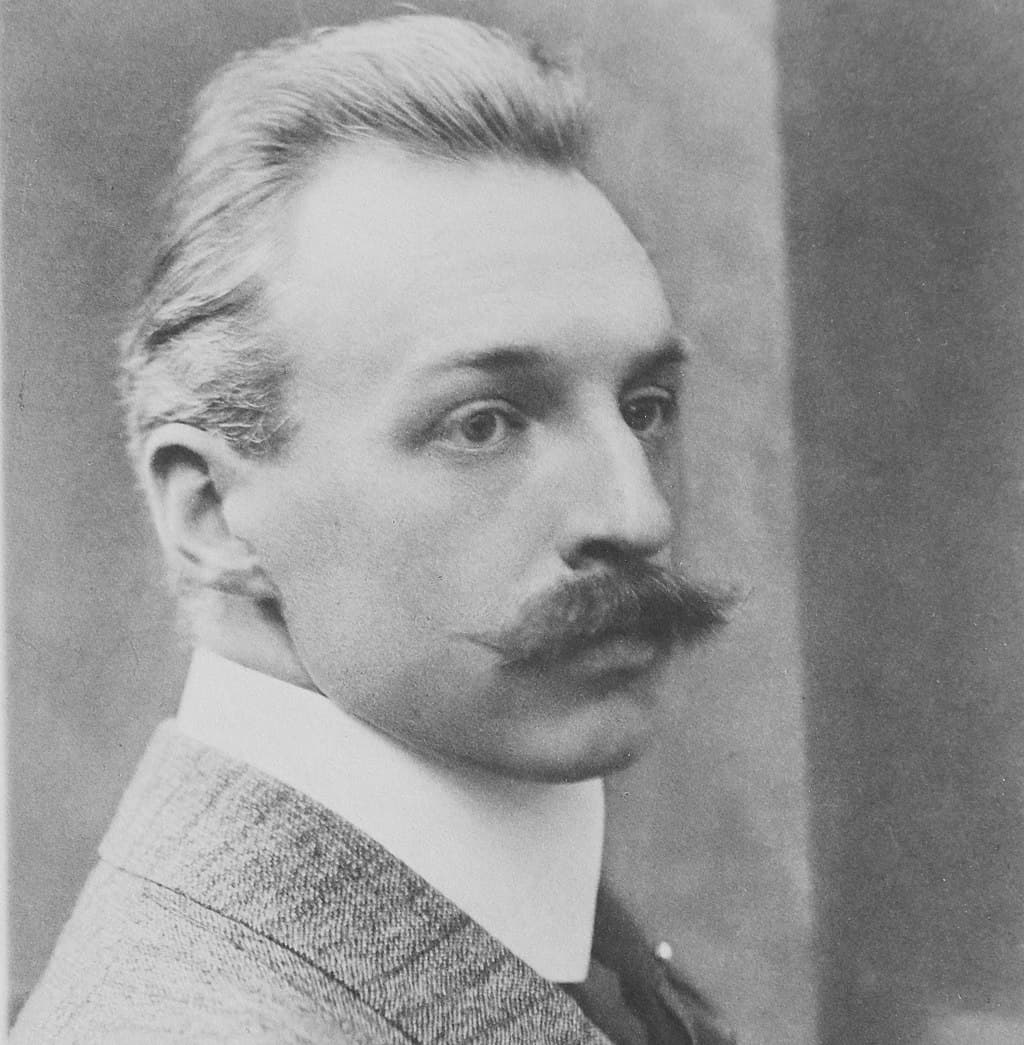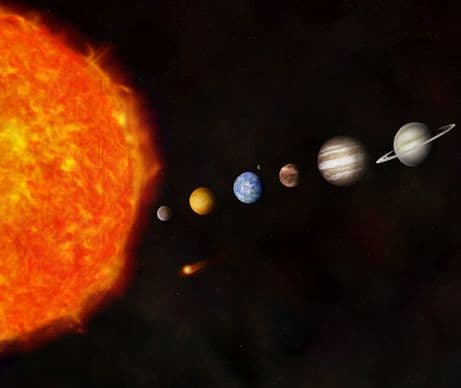Leopold van der Pals (1884–1966) took a different approach to the music of the planets in his 1931/1956 work Sphere-Music to the Dramatic Poem Mönch Wanderer, Op. 84. His Monk Wanderer was originally intended as a stage piece for actors, singers, eurythmic dancers, orchestra, and choir. He began working on the texts in 1921, composed and orchestrated the music from 1929 to 1931, and then abandoned it. He revisited the work in 1956, making a piano reduction, and creating two suites out of the original movements.

Leopold van der Pals
The story follows the post-life of a Monk. In the first movement, ‘The Monk has died. An angel appears and accompanies his soul on a journey during which he is supposed to acquire skills and knowledge that he will need in the next life.’
Leopold van der Pals: Mönch Wanderer: Sphären-Musik, Op. 84b – I. Vorspiel (Helsingborg Symphony Orchestra; Fredrik Burstedt, cond.)
The Monk’s travels start on the Moon and then take him sunward: Mercury, Venus, and the Sun, before swinging out to Mars, Jupiter, and Saturn. He visits all the planets that are visible to the naked eye. The further planets (Uranus and Neptune) get missed. Pluto wasn’t discovered until 1930, so it wouldn’t even be part of the original conception.

Solar System out to Jupiter
The poems that accompany the original operatic work, written by the composer, urge the Monk to look further:
The Moon, for example, directs the Monk to overcome ‘What pulls you down; | Then your gaze | Will be directed upward’, before taking him to Mercury.
Leopold van der Pals: Mönch Wanderer: Sphären-Musik, Op. 84b – II. Mond (Helsingborg Symphony Orchestra; Fredrik Burstedt, cond.)
At Mercury, the Monk is asked to ‘strive to name | The gods…’, clearly in preparation for visiting the other planets.
Venus, named for the Goddess of Love, is about Love: ‘Love sustains the world…’.
Leopold van der Pals: Mönch Wanderer: Sphären-Musik, Op. 84b – IV. Venus (Helsingborg Symphony Orchestra; Fredrik Burstedt, cond.)
Pals’ music is carefully shaped and crafted yet doesn’t have the thundering effect that Holst’s The Planets has, with its almost impressionistic setting of the planets’ characters (think of mysterious Uranus, for example).
The Sun is used as the source of all life: the world was lying in darkness until HE came, descending from the Sun.
Like Holst, Pals makes Mars a martial planet, as he must, given the source of the name. But instead of a battle cry, the movement is about preparedness – the need for the Monk to vanquish through strength. It’s more an admonition than anything else.
Leopold van der Pals: Mönch Wanderer: Sphären-Musik, Op. 84b – VI. Mars (Helsingborg Symphony Orchestra; Fredrik Burstedt, cond.)
Jupiter is about wisdom and Saturn is about profound mysteries: ‘Profound mysteries fill the world | Like gaping, dark abysses,’ and it is up to the Monk to be the man who kindles the light to illuminate the darkness.
At the end, the instruction Angel releases the Monk from his educational tour: ‘The world calls you, now you must descend | And complete there what you have begun here…’.
Leopold van der Pals: Mönch Wanderer: Sphären-Musik, Op. 84b – IX. Absteig (Helsingborg Symphony Orchestra; Fredrik Burstedt, cond.)
It’s a triumphal ending to a really interesting philosophical work. The Angel instructs the Monk in the world by taking him out of it.
Pals’ style started in the Romantic and then migrated to the Modern. The old forms had been concentrated and crystalized to become quick references to the older forms. Harmonic structures are modernized and developed, yet without adopting the atonality that surrounded music of European music in the early 20th century. Pals was born in St Petersburg in 1884 to a Dutch father and a Danish mother. He composed some 50 works before the age of 18. His Symphony No. 1 had its premiere with the Berlin Philharmonic in 1909 and was part of international concerts in Europe and the US until WWII.
He first studied with his grandfather, Julius Johannsen, director of the St Petersburg Conservatoire. His grandfather had been a student of Mendelssohn’s. Pals left Russia in 1903 to study in Lausanne, Switzerland, where he became friends with the conductor Ernest Ansermet. Next Pals moved to Berlin, and at the recommendation of Sergei Rachmaninoff, he studied with Reinhold Glière. Berlin was a hotbed of musical experimentation in the first decade of the 20th century and Pals created his own style, a mix of ‘romanticism, impressionism, free tonality and inspiration from Russian and Nordic folklore’. This same mix can be seen in other composers of this time. Berlin (1907–1915) was followed by Arlesheim, Switzerland (1915–1922), and then a decade of travel seeking medical relief for his ailing Russian wife (1922–1934). His last decades were spent in Dornach, Switzerland (1934–1966), where he became isolated from the musical world. After WWII, the musical action moved to the US where so many musicians had migrated. In the backwater of Switzerland, Pals continued to compose music and to write poetry, articles, reviews, and the libretti for his 8 operas. He died 1 February 1966, aged 83.
For more of the best in classical music, sign up for our E-Newsletter
